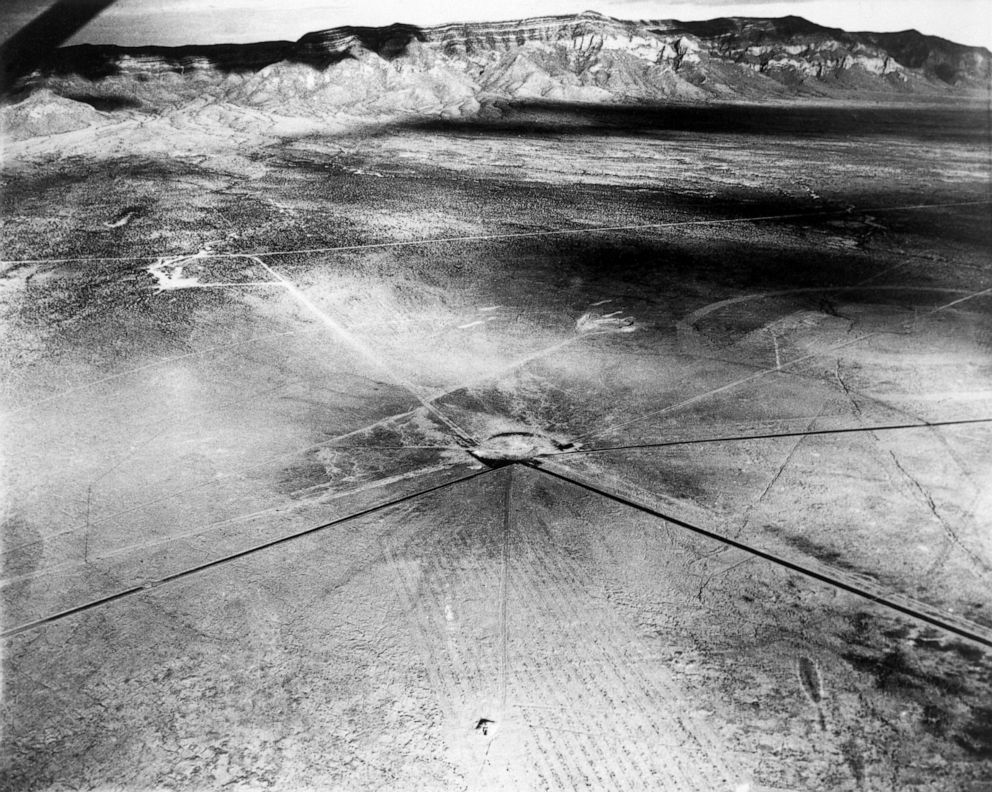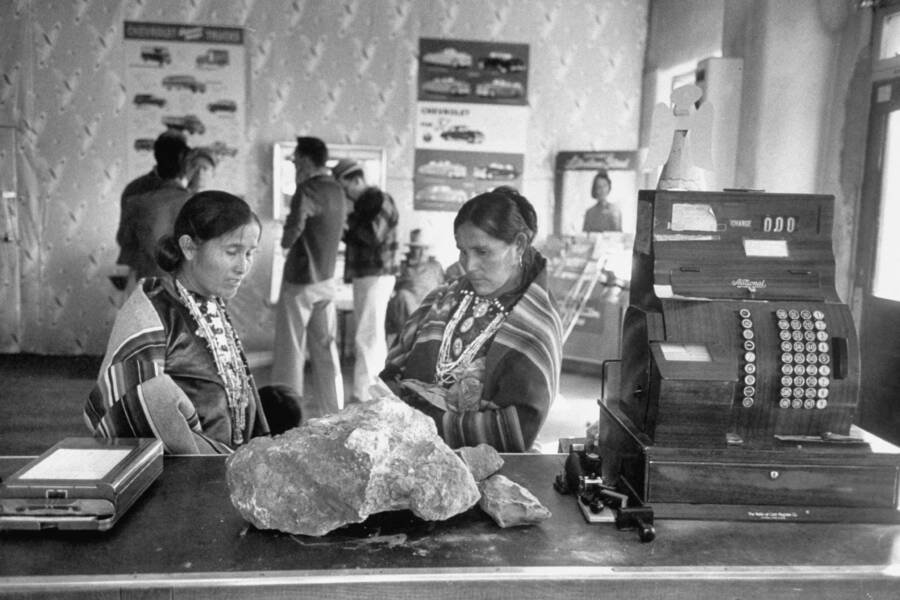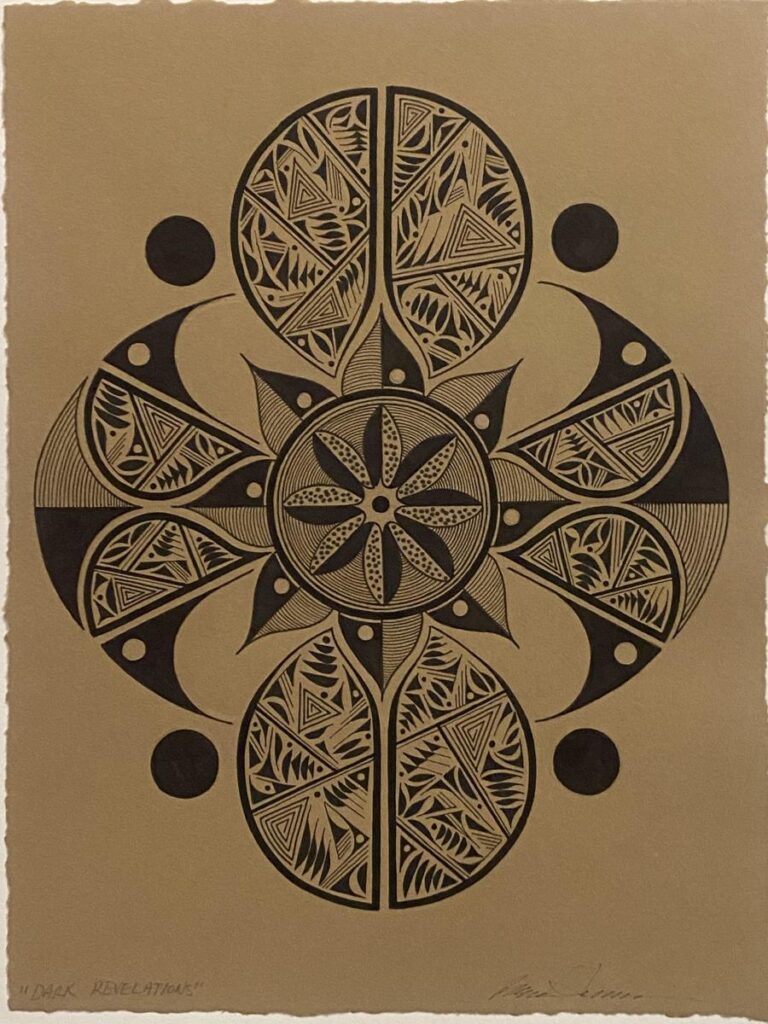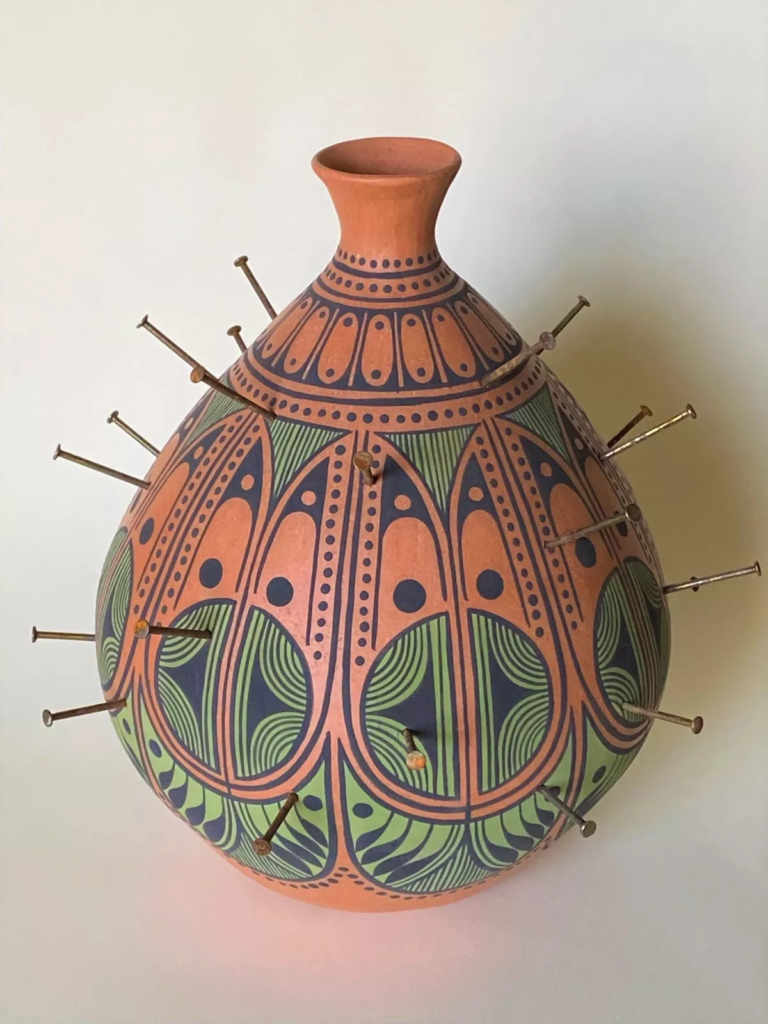ROWAN HARRISON <TWO TRIBES POTTERY> ON NUCLEAR COLONIALISM.
I just saw the new Christopher Nolan film… On J. Robert Oppenheimer, who created the atomic bomb, right? The film mostly focuses on Oppenheimer’s life & what happened after he creates the bomb: testing, how it was utilized in World War II in Japan, & how he was considered a communist because he didn’t support the nuclear arms race.

In this Sept. 11, 1945, file photo, the atomic bomb testing site near Alamogordo, N.M., shows the shallow crater dug by the blast 300 feet around the tower from which the bomb hung. The sand in an area 2,400 feet around the tower was seared into jade green glasslike cinders. The area devastated by the bomb measures 4,800 feet in diameter, the steel tower was entirely disintegrated.
Bettmann Archive via Getty Images, FILE
Now, the movie ends there. But if we look at the Cold War, which started right after all this went down, large uranium deposits were found in Navajo country. The government worked with different mining companies & started extracting uranium all across the reservation.
Rowan Harrison: Right now there are over 500 abandoned uranium mines on Navajo land. But during the Cold War, those mines were active, & Navajo men were used as laborers. The contractors & federal officials never explained the harmful effects of exposure to radiation & heavy metals, the sort.

The AEC [Atomic Energy Comission] did not lack knowledge: records of a January 25, 1951, internal meeting of AEC and PHS [Public Health Service] staff reveal that, on the basis of early measurements, they believed that radon was present in levels that would cause cancer and that ventilation could abate the hazard. Public acknowledgment of this problem was apparently squelched. For instance, Hueper, the scientist who wrote the 1942 review and who was then at the National Cancer Institute, was forbidden to speak in public about his concerns about the health hazard of radon in uranium mines.
Dr. Doug Brugge & Dr. Rob Goble. “The History of Uranium Mining & the Navajo People.” American Journal of Public Health, Sept. 2002, www.ncbi.nlm.nih.gov/pmc/articles/PMC3222290/.

So after the Cold War was over & the nuclear arms race dwindled, all these contractors started to abandon these mines, leaving nuclear waste behind. & during the late seventies and the early eighties, concentrations of cancer rates started rising fast across the Navajo reservation.
The medical community was kind of baffled about this because for Navajo people to have acquired cancer… It was very contradictory, because our people – our sustenance, our diet, our way of life – it’s all coming from the land. But because this land was now polluted with uranium waste, we started having high concentrations of cancer.

A 2015 University of New Mexico study found that Uranium had been found in the dust in 85 percent of Navajo homes. Navajos living near these mines have higher levels of uranium in their bones than 95% of the American population.
Over time we have lost tribal members, families, and friends because of cancer connected to all the exposure of radioactive waste across Navajo nations. This has been happening for decades & continues to happen today. Personally, my dad had kidney cancer… I’ve lost uncles, aunts… I just had two cousins at the beginning of this year who passed away due to cancer. And all these family members have either grown up or spent a big chunk of time on the reservation… Shiprock, Crownpoint…
That’s what I mean by the detriments of industrialization & continued extraction of natural resources. It stops the flow of our people, especially traditionalists who are trying to live in a very traditional way. Part of that process is having this relationship with nature & Mother Earth. But when communities start to pop up close to reservation lands, that brings a train of industries, distribution centers, automobiles… It’s a domino effect.


That is represented in a sort of roundabout way in my work when using non-native materials. From time to time, I will use found items, especially metals, as part of my work. On the surface it’s mixed media, right? ‘Cause I’m using found objects with the clay work. But the bigger narrative is since colonialism, since the birth and growth of America & Western expansion… The building of cities, metropolitan areas – all of that industrialization has encroached on Native lands. The extraction of fossil fuels & minerals for technology has had a lasting impact on Native American communities.

The nails that I use in my work, or the metal work that I use from time to time represents that facet of our society: its need to constantly take from the natural world to sustain our current living conditions. The clay work represents nature, Mother Earth. In many ways, I’m trying to create this balance, harmony.
View more of Rowan’s work at: